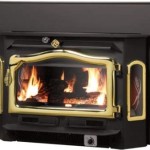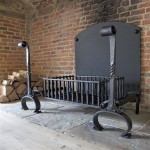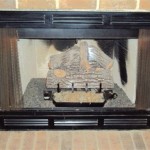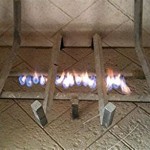See-Through Wood Burning Fireplaces: Design, Functionality, and Considerations
See-through wood burning fireplaces, also known as double-sided fireplaces, offer a unique and visually appealing way to divide and connect spaces simultaneously. They serve as both a functional heating source and a striking architectural feature, enhancing the ambiance of different rooms. This article explores the design features, functionality, considerations, and advantages associated with installing a see-through wood burning fireplace.
Design and Aesthetic Appeal
The primary benefit of a see-through fireplace is its design versatility. Rather than being confined to a single room, it becomes an integral part of the architecture, visible from two separate areas. This allows for creative spatial arrangements and visual connectivity. For instance, a see-through fireplace can link a living room and a dining room, a master bedroom and bathroom, or even an indoor and outdoor living space. The flame becomes a shared focal point, creating a cohesive and stylish atmosphere.
Manufacturers offer a wide range of design options to suit different architectural styles. These include traditional brick surrounds, sleek modern metal finishes, and minimalist designs that emphasize the fire itself. The design can be further personalized with the choice of firebox materials, such as refractory brick or contemporary smooth panels, as well as the shape of the firebox, which can be rectangular, square, or even panoramic. The ability to customize these features allows homeowners to integrate the fireplace seamlessly into their existing decor or create a completely new look.
Beyond the fireplace surround, the firebox itself can be enhanced with features such as log sets that mimic natural wood arrangements. Some models offer adjustable flame height and intensity, allowing users to control the visual impact of the fire. Moreover, the integration of lighting, whether it be subtle accent lights or more prominent spotlights, can further enhance the fireplace's aesthetic appeal, particularly when the fire is not burning.
The design considerations also extend to the surrounding space. Careful planning is necessary to ensure that the fireplace complements the existing furniture arrangement and architectural details. The height of the fireplace, its proximity to seating areas, and the overall balance within the rooms are all important factors to consider. The use of complementary materials and colors can further integrate the fireplace into the design scheme, creating a unified and harmonious look.
Functionality and Heating Efficiency
While see-through fireplaces add visual appeal, they also serve a practical function by providing heat to two separate areas. The efficiency of a see-through wood burning fireplace depends on several factors, including the design of the firebox, the quality of the materials used, and the installation method.
Modern see-through wood burning fireplaces are often equipped with advanced combustion technologies that maximize heat output and minimize emissions. These technologies include features such as air wash systems, which keep the glass doors clean for optimal viewing, and secondary combustion chambers, which burn off gases and particles that would otherwise be released into the atmosphere. The design of the firebox also plays a role in efficiency. Fireboxes with insulated walls and tight-fitting doors help to retain heat and prevent drafts, ensuring that the heat is directed into the rooms rather than escaping up the chimney.
Proper installation is crucial for maximizing the heating efficiency and safety of a see-through fireplace. The chimney must be properly sized and insulated to ensure adequate draft and prevent the buildup of creosote. The fireplace must also be installed according to local building codes and manufacturer's instructions to ensure that it is safe to operate. A professional installer can assess the specific requirements of the home and recommend the best installation method.
The type of wood burned also affects the heating efficiency and emissions of the fireplace. Hardwoods, such as oak and maple, produce more heat and burn longer than softwoods, such as pine and fir. It is important to use seasoned wood that has been properly dried, as green or wet wood produces less heat and more smoke. Using the correct type of wood not only improves the efficiency of the fireplace but also helps to reduce emissions and prevent the buildup of creosote in the chimney.
Some see-through fireplaces are designed with features that allow for zone heating, meaning that the heat can be directed to one room or the other as needed. This can be accomplished with dampers or vents that control the airflow. Zone heating can be particularly useful in homes where certain areas are used more frequently than others, as it allows homeowners to focus the heat where it is needed most.
Installation Considerations and Safety
Installing a see-through wood burning fireplace requires careful planning and adherence to safety regulations. The installation process is more complex than that of a standard fireplace, as it involves considerations for both rooms that the fireplace will be visible from. The location of the fireplace, the supporting structure, and the chimney system must all be carefully planned and executed.
Before installation, it is essential to consult with a qualified contractor or fireplace specialist to assess the feasibility of the project and obtain the necessary permits. The contractor can evaluate the structural integrity of the existing walls and floors and determine whether any modifications are needed to support the weight of the fireplace and chimney. They can also advise on the best location for the fireplace, taking into account factors such as airflow, clearances to combustible materials, and the overall design of the rooms.
The chimney system is a critical component of a see-through fireplace, and it must be properly designed and installed to ensure safe and efficient operation. The chimney must be sized appropriately for the fireplace and must be constructed of materials that are resistant to heat and corrosion. It must also be properly insulated to prevent heat loss and condensation, which can lead to the buildup of creosote. A professional installer can ensure that the chimney system meets all applicable safety codes and regulations.
Clearances to combustible materials are another important safety consideration. The fireplace must be installed at a safe distance from walls, floors, ceilings, and other combustible materials to prevent fires. The manufacturer's instructions will specify the minimum clearances required for the fireplace model. It is important to follow these instructions carefully to ensure that the installation is safe.
Once the fireplace is installed, it is essential to maintain it properly to ensure safe and efficient operation. Regular inspections and cleaning of the chimney are necessary to remove creosote buildup, which can be a fire hazard. The firebox should also be cleaned regularly to remove ash and debris. It is important to follow the manufacturer's instructions for cleaning and maintenance.
Safety features, such as spark screens or glass doors, are essential for preventing sparks and embers from escaping the fireplace and causing fires. These safety features should be used at all times when the fireplace is in operation. Smoke detectors and carbon monoxide detectors should also be installed in the vicinity of the fireplace to provide early warning of any potential hazards.
Proper training in the operation and maintenance of the fireplace is also essential for ensuring safety. Homeowners should learn how to properly start and maintain a fire, how to recognize and address potential hazards, and how to respond in the event of a fire or other emergency. Manufacturer's instructions and local fire departments can provide valuable information on fireplace safety.

Majestic See Thru Wood Burning Fireplace Fine S Gas

Elegance 42 See Thru Ambiance

Vantage Hearth See Thru Wood Fireplace

42 Designer Radiant See Thru Wood Burning Fireplace Refractory Liner Majestic

Elegance 42 See Thru Ambiance

Elegance 42 See Thru Ambiance

Majestic Designer See Thru 36 Radiant Wood Fireplace Dsr36 North Country Fire

Wood Burning The Fireplace Gallery

Rsf Focus St See Thru Woodburning Zero Clearance Fireplace Fergus

Majestic 42 See Thru Radiant Wood Burning Fireplace Fireplaces Usa








